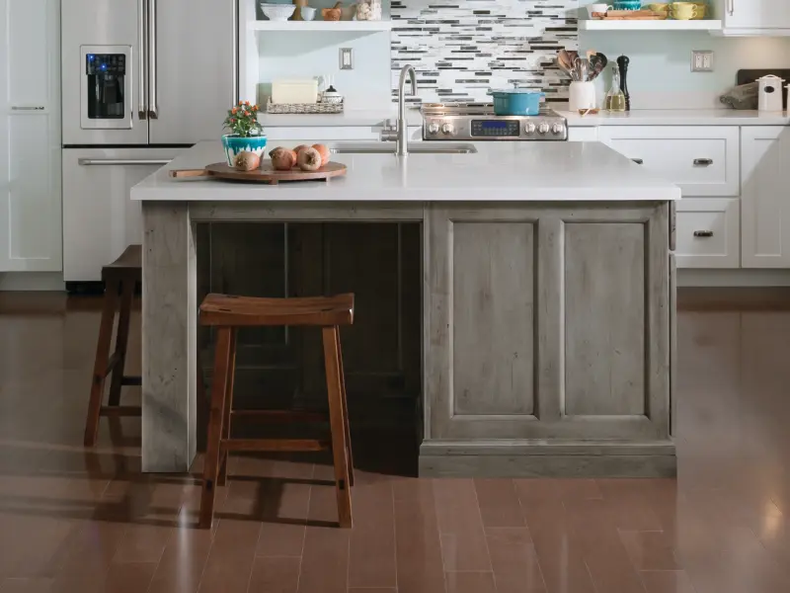Achieve an Advanced Appearance Making Use Of Ornate Legs For Kitchen Island Styles
Achieve an Advanced Appearance Making Use Of Ornate Legs For Kitchen Island Styles
Blog Article
An Overview to Selecting the Perfect Legs For Cooking Area Island for Your Home
Picking the suitable legs for your cooking area island is a nuanced decision that influences both the capability and visual allure of this main room. As you think about these components, it comes to be obvious that the ideal legs can change not just the look of your cooking area yet likewise its usability for years to come.

Recognizing Kitchen Island Legs
When picking legs for a kitchen area island, it's necessary to comprehend their visual and useful functions in the overall layout. The legs act as an important support system, guaranteeing stability and resilience for the island, which often works as an office, dining area, or collecting place. The option of material and building technique should be durable enough to stand up to everyday usage and possible wear.
In enhancement to their structural obligations, legs add significantly to the island's aesthetic allure. They can enhance the cooking area's style, whether with typical, modern, or diverse designs. The height and proportion of the legs are also important considerations; they must balance with the island's counter top elevation while making certain comfy seating for those utilizing the space.
Moreover, the leg layout can affect the total circulation of the kitchen area. Open, airy leg styles can produce a sense of lightness, while solid, considerable legs may communicate a more grounded and stable visual - Legs For Kitchen Island. Comprehending these useful and aesthetic facets will certainly guide house owners in making educated choices that complement their kitchen's design and boost its functionality
Popular Styles and Materials
The option of legs for a kitchen island incorporates a range of preferred designs and products, each offering special characteristics that can enhance both capability and aesthetic appeals. Among the most in-demand designs are contemporary, rustic, and conventional. Contemporary legs usually include sleek, minimalist layouts that emphasize simplicity and tidy lines, making them perfect for modern kitchens. Rustic designs, on the various other hand, welcome natural environments and often display redeemed timber or troubled finishes, adding heat and appeal to the area. Standard legs typically exhibit ornate details and craftsmanship, enhancing traditional cooking area styles.

Elevation and Security Factors To Consider

The legs of the cooking area island ought to offer sufficient support, guaranteeing that the framework can stand up to day-to-day usage without tottering or shifting. Product option plays a considerable duty in stability; steel legs, for circumstances, have a tendency to offer higher toughness contrasted to wood.
Matching Your Kitchen Aesthetic
Selecting the ideal legs for your cooking area island exceeds functionality; it additionally plays a considerable function in the overall visual of the area. When choosing legs, consider the layout style of your cooking area. For a modern look, sleek metal or minimal styles can produce a tidy, modern-day ambiance. On the various other hand, standard or rustic kitchen areas often benefit from wood legs with intricate outlining or a distressed surface, boosting heat and personality.
Legs that enhance or comparison with your island's surface area and surrounding cabinetry can create visual consistency or striking focal points. In addition, consider the coating of the legs; matte, shiny, or distinctive surfaces can considerably impact the overall feel of the kitchen area.
Installation and Maintenance Tips
Installing kitchen area island legs needs mindful interest to information to guarantee both security and visual allure. Use a stud finder to find wall surface studs if you are connecting the legs to a wall or making use of brackets for added assistance.
When safeguarding the legs, make use of top quality screws and, if necessary, wood glue for extra stamina. For metal legs, ensure that you are making use of appropriate supports and tools to avoid damages to your floor covering. It is recommended to look for levelness after installment, making changes as required to prevent tottering.
Upkeep is equally vital for longevity - Legs For Kitchen Island. Consistently check the legs for Our site any signs of wear or helping to loosen, especially in high-traffic locations. Tidy the legs with an appropriate cleaner, preventing abrasive materials that may damage the surface area. For wooden legs, take into consideration applying a wood conditioner occasionally to maintain their finish. By complying with these installment and maintenance pointers, you can guarantee that your kitchen area island legs remain both aesthetically appealing and practical.
Verdict
In conclusion, picking the appropriate legs for a kitchen island necessitates careful factor to consider of elevation, security, and visual compatibility. By choosing suitable products and styles that straighten with the overall cooking area style, capability can be boosted while preserving aesthetic appeal. Proper installation and continuous maintenance even more add to the durability and durability of the kitchen island. Ultimately, thoughtful leg choice plays an essential duty in raising both page the usefulness and style of the kitchen area.
When choosing legs for a kitchen island, it's necessary to comprehend their functional and aesthetic duties in the total design. Open, ventilated leg designs can create a feeling of agility, while strong, substantial legs might convey a more based and stable visual. The legs of the kitchen island need to offer adequate support, making sure that the framework can endure day-to-day usage without moving or wobbling.Setting up cooking their explanation area island legs calls for mindful interest to detail to ensure both stability and aesthetic appeal.In verdict, selecting the appropriate legs for a kitchen island demands careful factor to consider of elevation, stability, and visual compatibility.
Report this page